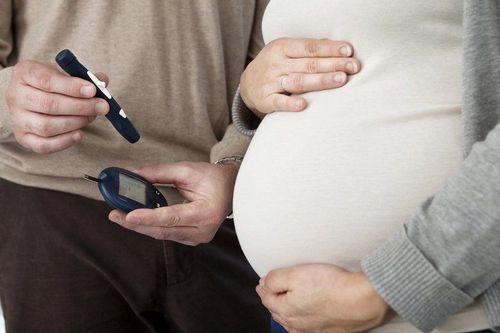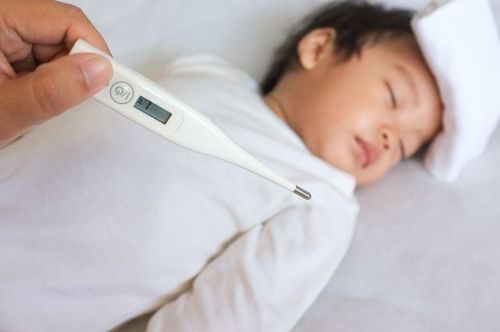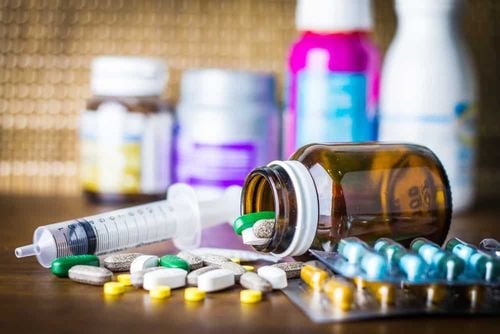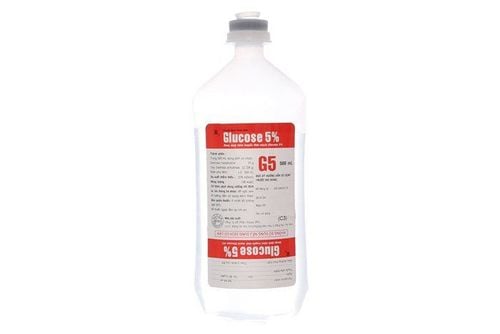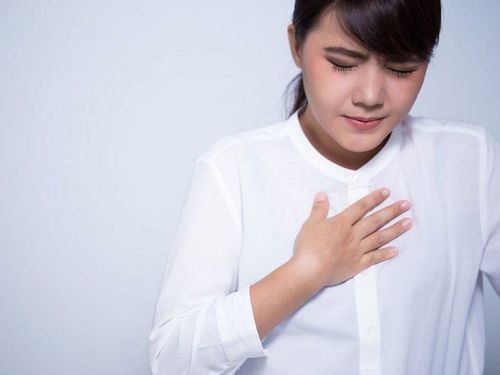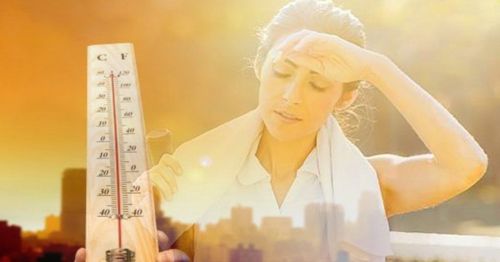This is an automatically translated article.
The article was professionally consulted with Doctor Vo Ha Bang Suong - General Internal Medicine - Department of Examination & Internal Medicine - Vinmec Phu Quoc International General HospitalPhysiologically, the human body has regulatory mechanisms to keep body temperature stable, but this feature also has limitations. When in a harsh and prolonged environment, the body will not be able to compensate, leading to disturbances of various degrees, especially which can be life-threatening. Equipping yourself with knowledge about the effects of the environment on your body is essential so that you can adapt to the situation, avoiding unfortunate consequences.
1. Heat-related illnesses
Heat illness includes a number of different disorders, the severity of which varies from muscle cramps and heat exhaustion to heatstroke (it's a life-threatening emergency). Although heat illness can be prevented, it still affects the health of many people, especially those who work in hot environments. When heatstroke is not treated promptly and effectively, the mortality rate will reach 80%.Patients with heat exhaustion easily lose strength and have difficulty maintaining normal neurological function. During heatstroke, mechanisms to compensate for heat loss fail (although sweating may still be present) and central nervous system function is impaired. Heatstroke should be diagnosed early and treated aggressively in patients with hyperthermia and altered neurological status or other CNS dysfunction, regardless of sweating.
With prompt treatment, most people make a full recovery from heat illnesses. However, heat stroke can be fatal if not properly controlled.

Đứng dưới trời nắng nóng kéo dài dễ dẫn tới sốc nhiệt
2. Causes of heat illness
Thermal disturbance is caused by a combination of increased heat input and decreased output.2.1. Excessive heat input usually Excessive heat input is often the result of exertion, high ambient temperature, or both. Disease-related disorders and stimulant drug use can increase heat production.
Excess heat:
Some underlying disorders: Hyperthyroidism; Infection; Malignant hyperthermia; neuroleptic malignant syndrome; Severe salicylate poisoning; Epilepsy ; Serotonin syndrome. High ambient temperature Stimulants: Amphetamines; Cocaine; Methylenedioxymethamphetamine (MDMA, or Ecstasy); monoamine oxidase inhibitors; Phencyclidine (PCP) Strenuous activity: Exercise, physical activity 2.2.Poor cooling Poor cooling can be a result of obesity, high humidity, high ambient temperature, heavy clothing and anything that damages the sweating mechanism or sweat evaporation.
2.3.Clinical effects of heat illness The clinical effects of heat illness are exacerbated by the following:
Inability to tolerate increased cardiovascular demands (eg, due to aging) chemistry, heart failure, chronic kidney disease, respiratory disorders, liver failure) Dehydration Electrolyte disturbances Use of certain basic medications The elderly and children are at high risk for heat illness. Elderly people are at high risk, because they often use drugs that can increase the risk, have higher rates of dehydration and heart failure, and lose the ability to synthesize thermoregulatory proteins during heat shock. . Children are at increased risk due to their larger body surface-to-mass ratio (resulting in a high temperature rise from the environment on a hot day) and a slow rate of sweat production. Children are slower to adapt to the climate and less responsive to thirst.
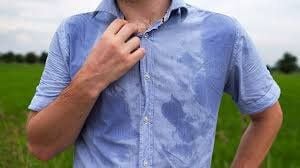
Đổ mồ hôi khiến cơ thể mất đi một lượng nước lớn và muối
Exhaustion due to exercise in the hot sun or heatstroke. No strenuous activity but still heat stroke. Heat exhaustion, heat cramps, and heat stroke all occur when the body is unable to cool itself effectively. However, each case is slightly different:
Heat exhaustion occurs when the body loses large amounts of water and salt through sweating and especially through hard work or exercise . The loss of these essential fluids disturbs the circulatory system which interferes with brain functions. Patients with heart, lung, or kidney problems or who are on a sodium diet may be especially susceptible to heat exhaustion. Heat cramps also occur when the body loses large amounts of fluids and salts. But heat cramps also occur with the loss of other nutrients like potassium and magnesium, especially during extreme exertion. Heat stroke is the most serious heat illness, occurring when the body endures prolonged exposure to intense heat and loses its ability to cool itself. During intense and prolonged heat, a part of the brain normally regulates body temperature, so the body cools down. People with medical conditions that impair the body's ability to regulate sweat, such as scleroderma or cystic fibrosis, may be at greater risk of heat stroke.
3. Treatment methods for heat illnesses
3.1. Cramps Basic treatment is to avoid heat and provide fluids.Rest, drink lots of filtered water, juices to ensure food hygiene, drink electrolytes and eat foods with moderate salt. Gently massaging or squeezing hard into areas of muscle cramps can ease contractions.
In severe cases, the patient needs to be given intravenous fluids with saline solution. If heat cramps don't go away within an hour, or you have heart problems or are on a salty diet, seek medical help.
3.2. With heat exhaustion and heatstroke It's important to get emergency medical help first. Then, if possible, give the patient water to drink, but do not give it if the patient is lethargic or has passed out. Avoid alcohol or caffeine-containing beverages.
The basic treatment for heat exhaustion is fluid and electrolyte replacement. The patient should be moved to a cool position, lying flat or raising the legs above the head, taking small sips of cool, slightly salty water such as electrolyte drinks, tomato juice, cold meat broth or juices. other vegetables and fruits.
Heatstroke usually comes on quickly and can cause permanent brain damage and even death if not treated promptly. Anyone with heat stroke needs urgent medical attention.
While paramedics are arriving, helpers should move the patient into the shade or cover them with wet clothing or bedding. Patients can be undressed and sprinkled with cool water until medical personnel are present. Ice packs can be placed in the groin, neck, armpits or cooled by hand, fan or dryer set to cold (do not use hot dryers). If possible, use a thermometer to monitor the patient's temperature and stop cooling if their body temperature has returned to normal. When going to medical facilities, patients who have suffered from heat stroke will be given intravenous fluids to correct dehydration and provide adequate sodium and potassium. Patients may also receive intravenous medications to control seizures or other complications. Monitor at the bedside for 24 hours to a few days.

Bổ sung nước ép hoa quả để bù nước và chất cho cơ thể
4. Prevention of heat diseases
4.1. Good senses are generally the best prevention. In extremely hot weather, the elderly and young people should not stay in unventilated premises without a cooling system. Children should not be left in cars in hot weather. If possible, avoid strenuous activity in a very hot environment or a poorly ventilated space and do not wear poorly insulated clothing. Weight loss after exercise, working out can be used to track water loss. Accordingly, those who have lost 2 to 3 percent of their body weight should be reminded to drink plenty of fluids and recover 1 kilogram of their weight before starting the next day's exposure. If water loss is > 4% of body weight, activity should be limited to 1 day. If physical exertion in a hot environment cannot be avoided, water should be replenished by drinking frequently. Evaporation of water must be facilitated by wearing breathable mesh clothing or using a fan during work. 4.2. Provide adequate fluids and electrolytes to the body Maintaining adequate fluid and sodium intake helps prevent heat-related illnesses. Thirst is an indicator of severe dehydration and the need for fluid replacement during exertion, since thirst does not stimulate the center until plasma osmolality rises 1 to 2% above normal. . Therefore, it is advisable to replenish water whether thirsty or not. Prolonged exertion causes very high sweat loss, requiring rest periods that reduce sweat rates and allow time for rehydration. For most situations and activities, spring water is suitable to avoid dehydration.Replenish solutions containing electrolytes if in a situation that is likely to cause electrolyte loss through sweat, disturbances in water and electrolyte balance.
4.3. There is a mode for the body to gradually acclimate to the thermal environment The gradual increase in the amount and amount of work done in hot temperatures eventually leads to acclimatization, allowing people to work safely. completely at temperatures that were previously unacceptable or life-threatening.
For maximum benefit, a climate routine typically requires spending 8 to 11 days in a hot environment with some exercise daily (eg, 1 to 2 hours/day in increments of intensity). day). Climate acclimatization significantly increases the amount of perspiration (and therefore cooling) produced at a given level of exertion and markedly reduces the amount of sweat electrolytes. Accustoming to the climate significantly reduces the risk of heat illness.
4.4. Adjust activity levels Where possible, people should adjust their activity levels based on the environment and any heat injury reduction equipment (e.g. fire protective clothing). Working time should be shortened and rest time increased when:
Temperature increases Increases humidity The workload is heavier The sun shines brighter. Windless. When wearing protective clothing or protective equipment Heat-related illnesses can cause heatstroke and even death. Therefore, in hot weather, you need to apply heat prevention measures to ensure health.
Please dial HOTLINE for more information or register for an appointment HERE. Download MyVinmec app to make appointments faster and to manage your bookings easily.




